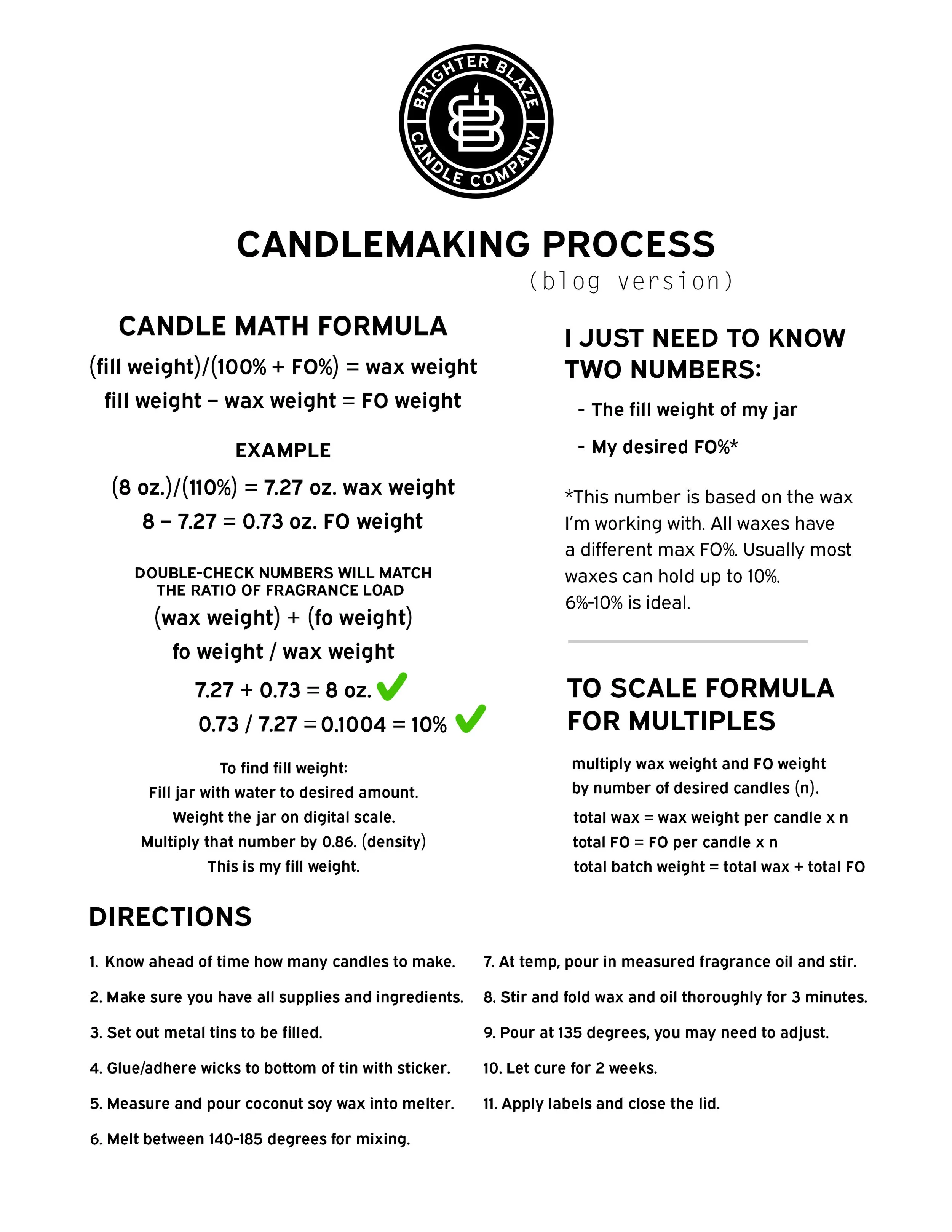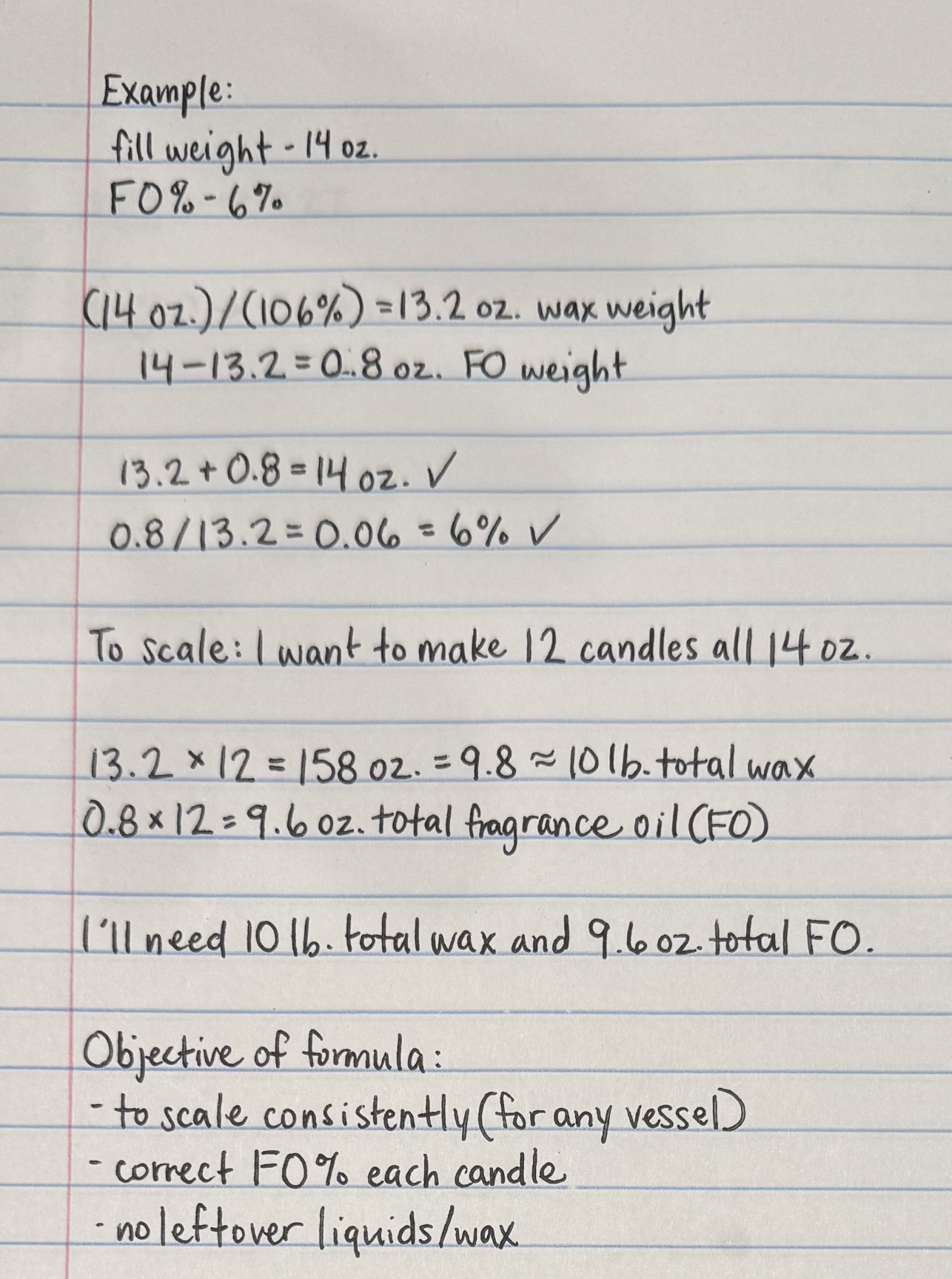Like Math to a Flame: Figuring out the Formula
Just like vessels, ingredients, and fragrances, there’s no shortage of math formulas that chandlers use to create their candles. I’m not a mathematician, so numbers can get confusing and overwhelming pretty quickly. Staying true to the Brighter Blaze philosophy, simplicity is key. After researching several different methods to make the most efficient and effective candles possible, I found one that fits my needs perfectly. Shoutout to Memory Box Candle Co.—I credit her for this formula. Her videos are incredibly informative and concise, so definitely check her out if you’re interested in learning more about candle-making.
My main objectives using a math formula:
consistent formula for any vessel/any size
Correct ratio of wax and FO %
No leftover liquid/wax
Before diving into the numbers, it’s important to understand what each term means—especially if you’re interested in making candles yourself. I’ve also included simple directions so anyone can follow along and create their own.
Fill Weight – the total weight of wax in each vessel.
FO Weight – the total weight of fragrance oil in each vessel.
FO % – the percentage of fragrance oil used in each vessel.
In theory, calculating a percentage is great—but in this case, wrong scenario. I noticed that many methods involve multiplying by the fragrance oil (FO) percentage, but that can be misleading since it already accounts for both wax and fragrance combined. Instead, we’ll work backward to find the true ratio of wax to fragrance oil. This gives a more accurate understanding of how much of each ingredient is actually needed.
Discovering this method feels like a huge breakthrough—a real weight off my shoulders. As someone who’s not naturally drawn to math, I’ve learned that I can teach myself new things just by taking the time to understand the hows and whys behind the process. It feels like the hard part is finally done, and the complicated stuff has been streamlined to make everything easier moving forward.
Let’s try another example. For this let’s say 14 oz. is the result of the difference in density between wax and water (0.86) multiplied by 16.27 oz.
Most candles recommend using fragrance oil (FO) at a minimum of 2% and not exceeding 10%. A 6% FO load is considered a balanced, mid-range starting point. Using this method, I’ll begin at 6% as my baseline and work backward to calculate the proper ratios. This allows me to test the hot throw at different intensities and record which percentages produce a stronger or weaker scent. If the results are still too subtle, I can then increase gradually from 6% up to 10% to see if the fragrance performance improves.
I’m hopeful this formula will work out—it already looks promising since it includes a way to double-check the math. But if it doesn’t, I’m completely prepared to keep experimenting until I find the right one. Having the correct formula can make or break the candle-making process, but the real takeaway is to keep going until everything clicks.




